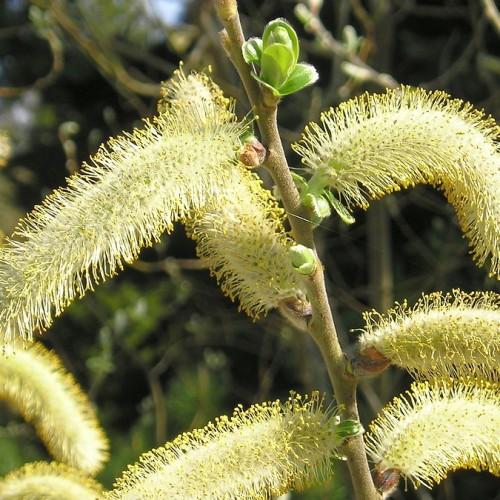
Hooker's willow
Salix hookeriana
Also Known As - coastal willowCycle:
Perennial
Watering:
Frequent
Hardiness Zone:
4
Flowers:
Flowers In Spring
Sun:
Full sun
Soil:
Well-drained
Fruits:
Fruits In Summer Ready In Fall
Leaf:
Yes
Growth Rate:
Moderate
Maintenance:
Moderate
Care Level:
Medium
watering
Weeping pussy willows (Salix caprea 'Kilmarnock') should be watered thoroughly and deeply once every 7-10 days during the growing season (April-September). During the dormant period (October-March), only provide water every 3-4 weeks. Allow the soil to dry out between watering and never let the plant sit in water. Always check the soil moisture level by inserting your finger 2-3 inches down. If it is still wet, then skip watering until the soil is dry.
sunlight
Weeping pussy willow (Salix caprea 'Kilmarnock') requires full sun, meaning at least 6 hours of direct sunlight per day. This plant thrives in sunny environments such as gardens and open meadows with dry soil. The leaves of this species are best kept out of full sun during the hottest part of the day, especially during warmer months when temperatures can invariably rise above 32 Celsius. It is best to allow this species to receive the majority of its sunlight during the morning and evening when the temperatures are cooler, as to not overexpose it to the harsh rays of the sun and to also allow for ample ventilation.
pruning
Weeping pussy willow (Salix caprea 'Kilmarnock') should be pruned twice a year: once in the fall and again in the spring. In the fall, any dead or damaged branches should be removed to keep the plant healthy. For pruning in the spring, start by cutting out any dead branches and thin branching to promote air flow and reduce the chance of disease. You can then shape the weeping pussy willow as desired, leaving the main branches and cutting away any excess growth. Pruning in the spring should be done before new buds form on the plant, usually in late winter or early spring. It’s important to keep the pruning light and to not remove too much foliage, as this could damage the plant.
